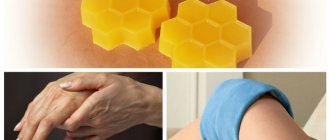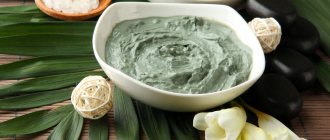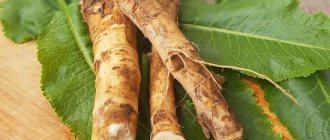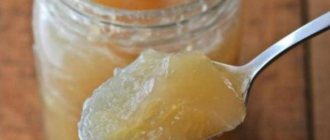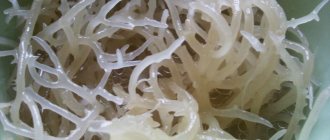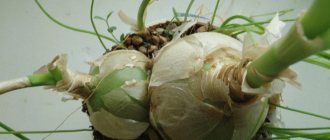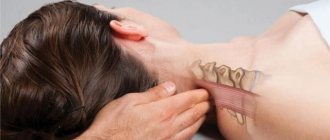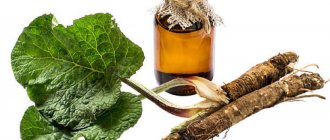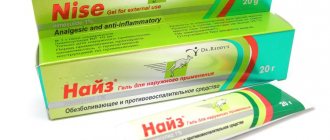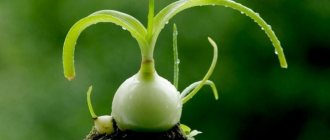Horseradish is used not only for preparing a tasty, hot, spicy seasoning for meat or fish. This perennial plant with powerful dark green leaves is actively used in folk medicine to treat almost all pathologies of the musculoskeletal system. With the help of tinctures, ointments, rubbing, and compresses prepared from dry and fresh raw materials, they get rid of pain, swelling, and stiffness of movement. Traditional healers recommend treating arthritis, osteoarthritis, tendinitis, tendovaginitis, and gout with compounds made from leaves, roots, stems and flowers of horseradish.
Rheumatologists, orthopedists, and vertebrologists are skeptical about such methods of therapy. They do not deny the presence of a huge amount of biologically active substances in the useful plant. But their concentration is low, insufficient to stop even low-grade inflammatory processes. Representatives of official medicine allow the use of horseradish rubs and compresses only at the rehabilitation stage to speed up the recovery of muscles, ligaments and tendons. But treating joint diseases with horseradish at the acute stage can provoke serious complications.
Characteristics of the plant
Horseradish is a common member of the extensive Brassica family. It has a thick, fleshy root, large oblong basal leaves and entire upper leaves. In mid-summer, the plant shoots out arrows with small snow-white flowers. And after some time, oblong-oval, swollen pods with 4 seeds form on them. Almost all parts of horseradish are used to treat joint pathologies. Plant materials are easy to collect, process and store for future use in order to prepare healing tinctures in late autumn, winter and early spring.
Horseradish is especially beneficial for joints when consumed internally. But store-bought seasonings contain minimal amounts of healing substances. Most of them evaporate (phytoncides) or decompose (vitamins, organic acids) during heat treatment, adding vinegar and salt. Therefore, you should use freshly prepared homemade seasoning without any taste improvers.
In the treatment of joints with horseradish, tinctures and compresses from fresh leaves are most often used. Beneficial substances from plant materials are not able to penetrate through all epidermal layers and accumulate in the joint cavity. The therapeutic effect lies only in the properties of mustard oil:
- locally irritating;
- distracting;
- warming up.
The oil irritates receptors located in the subcutaneous tissue. Blood rushes to the skin, causing a pleasant feeling of warmth. Now the central nervous system receives two groups of impulses - from receptors in the dermis and from nerves innervating joints damaged by pathology. This helps reduce the severity of pain.
Doctors warn that the analgesic and warming effect of horseradish tinctures and ointments comes from the auxiliary ingredients used in their preparation. These are ethyl alcohol, vodka, gum turpentine, essential oils. Without the presence of these components, the therapeutic effect of the leaves or roots is negligible.
Composition and beneficial properties
The chemical composition of all plants from the Brassica family (radish, shepherd's purse, turnip, wasabi) contains many bioactive substances, regardless of whether they belong to vegetable, oil or medicinal crops. But in the highest concentrations they are found in fresh leaves and roots of horseradish. Mustard oil is especially valued as it is the source of the specific taste and aroma of the spicy seasoning. This substance determines the healing properties of horseradish and allows it to be used in the treatment of diseases of the musculoskeletal system. The chemical composition of horseradish is also represented by other useful organic compounds.
| Substances from the chemical composition of horseradish leaves and roots | Pharmacological properties and therapeutic effect |
| Lysozyme | The bioactive substance is an analogue of the enzymes contained in human saliva. It is an antibacterial agent, an enzyme of the hydrolase class that destroys bacterial cell walls by hydrolysis |
| Ascorbic acid | Vitamin C strengthens local immunity, catalyzes and participates in biochemical processes that accelerate the regeneration of damaged joint structures |
| Sinigrin | This sulfur-containing aminoglycoside has bactericidal properties and, in high concentrations, inhibits the growth and reproduction of certain pathogenic microorganisms, including causative agents of infectious joint pathologies. |
| B vitamins | The roots and fresh leaves of horseradish contain a lot of pyridoxine, thiamine, cyanocobalamin, folic acid, and nicotinamide. B vitamins are involved in the innervation of joints, nearby muscles and soft tissues |
| Fixed oils | Plant raw materials contain triglycerides, polyunsaturated fatty acids, and a certain amount of fat-soluble vitamins. Organic compounds are necessary to improve the condition of blood vessels responsible for joint trophism |
All aboveground and underground parts of horseradish contain flavonoids, which accelerate blood circulation and normalize microcirculation. These bioactive substances can eliminate the deficiency of nutritional compounds that occurs in all joint diseases. The chemical composition of fresh and dry raw materials also includes microelements necessary for the functioning of joints - zinc, copper, molybdenum, calcium, phosphorus, iron.
Traditional medicine recipes
If you experience any discomfort in your joints, you should consult a doctor. Medical care provided at the initial stage of pathology development will allow you to get rid of even such serious diseases as coxarthrosis and gonarthrosis. And medical intervention for rheumatoid, reactive, juvenile, gouty arthritis is necessary to prevent their spread to healthy joints and internal organs.
Rheumatologists or orthopedists have nothing against the use of horseradish folk remedies. But only after the inflammation has been relieved and the pathology has been transferred to the stage of stable remission.
Compresses
Compresses are the most therapeutically effective procedures using horseradish due to the contact of the skin with mustard oil. Only young fresh large leaves are used. They can be collected in advance, placed in a plastic bag and placed on the top shelf of the refrigerator. Under such conditions, they do not lose their medicinal properties for 7-10 days. Before the procedure, the sheet is washed with running water and immersed in boiling water for 10-15 seconds. Cool slightly and then apply to the sore joint. The compress is fixed with plastic film, thick cloth, medical or elastic bandage. Leave until completely dry for about 1-2 hours, then remove, wash off the remaining leaves and rub in a nourishing cream to soften and moisturize irritated skin. Traditional healers often recommend doing the following compresses to eliminate pain:
- a large, clean, fresh leaf is kneaded well with your hands so that dark green juice appears on its surface;
- smear with floral liquid honey and apply to the area of pain and inflammation;
- secure with film, cloth, bandage, and leave until completely dry;
- Carefully remove the sheet, wash off the dried parts with warm water, rub in any moisturizer.
The therapeutic effect of mustard oil is enhanced in combination with the bioactive substances of honey. Applying a compress to the affected joints once a day for a week will help eliminate mild pain and morning stiffness. This effect is due to the ability of mustard oil to increase body temperature upon contact with the epidermis.
Ointment with a warming effect
At home, a rich green ointment is prepared from fresh horseradish leaves. It is used as a mixture for compresses and rubbing into joints or the spine. The ointment stains clothes and bedding and is poorly absorbed into the skin. Therefore, after rubbing it in, it is necessary to place a sterile napkin on top, securing it with pieces of adhesive tape. The resulting product is concentrated and caustic. Some patients may experience a sensation of not only warmth, but also a slight burning sensation. If any strong discomfort occurs, wash off the ointment with water. The remedy is prepared according to the following recipe:
- scald 2-3 sheets with boiling water, cut off the hard parts;
- grind with a blender or simply grind with a pestle in a mortar until a homogeneous mass is formed;
- add a tablespoon of vegetable oil and 2 drops of pine essential oil;
- Stir, add in parts an equal volume of ointment base.
The ointment base can be anything. To obtain a thick product, use lanolin, medical petroleum jelly, pork or goose fat. To prepare a thinner ointment, add baby cream or homemade butter to the crushed leaves. The horseradish product should only be stored in the refrigerator and used when the first discomfort appears.
Horseradish tincture with vodka: beneficial properties
When horseradish is infused for a long time in vodka or 96% ethyl alcohol, the solution is saturated with bioactive substances. It has a local irritant effect, promotes blood flow to the skin and damaged joints. Mustard oil in combination with ethyl alcohol has analgesic properties. When rubbing the tincture, the skin turns a little red, and a pleasant warmth is felt. But people with dry and/or sensitive skin may experience severe irritation. In this case, you should infuse the horseradish not with alcohol, but with vegetable oil - olive, sunflower, corn, and best of all - flaxseed. How to prepare a healthy tincture:
- an opaque container is filled with flowers, chopped arrows, roots, horseradish leaves, compacting the fresh plant material well;
- fill the container to the brim with oil, vodka without additives or 96% ethyl alcohol diluted with water (1:1);
- place the container in a warm, dark place for 4-5 weeks, shake daily for better extraction of bioactive substances;
- rub into sore joints 1-2 times a day.
At the end of the infusion, there is no need to filter the tincture. The longer the leaves and roots are in the solvent, the more healing the product is. Alcohol tincture is hot, warming, oil tincture is pain-relieving and nourishes the joints.
Compress
One sheet is enough for a compress. It must be washed and then placed in boiling water. Hold for a few seconds. Place the ingredient removed from the boiling water on a paper towel and dry. For the compress to work, it must be applied hot to the sore spot. Horseradish leaves have long proven their effectiveness.
Place the leaves heated in water with the inside on the neck. Additional heat needs to be created. To do this, the neck, lined with horseradish leaves, is covered with polyethylene and tied with a scarf. The procedure lasts all night, the compress is removed only in the morning. During this time, salt deposits form on the surface of the skin. They are removed by wiping the skin with a dry cloth or towel. Then apply a high-fat cream so that the skin does not dry out.
The compress is made only from freshly cut leaves. Leaves can be stored in the refrigerator for no more than 3 days. The active substances have a volatile structure. They evaporate as soon as the liquid leaves the plant. This, in turn, occurs with wilting. If you don’t have the leaf, it makes sense to purchase ointments and creams containing it, because with the addition of horseradish, the warming effect begins. You can prepare such products yourself.
Contraindications
Horseradish is used in small quantities to treat joints, no more than 1-2 times a day. Biologically active substances from its chemical composition, when used internally, can irritate the mucous membranes of the gastrointestinal tract. Therefore, people with gastritis, ulcerative lesions of the stomach and duodenum should avoid eating horseradish seasonings. The feasibility and safety of treatment with fresh crushed roots should be discussed with a doctor who has kidney and liver pathologies. Relative contraindications to the use of horseradish seasonings are:
- acute or chronic form of pancreatitis;
- pregnancy;
- childhood;
- breastfeeding period;
- arterial hypertension.
An absolute contraindication is individual intolerance to the chemical ingredients of the perennial plant. Compresses, ointments, and rubbing should not be applied to skin with open wound surfaces. When there are moles or papillomas on the skin over a sore joint, you need to visit an oncologist before carrying out therapy.
Before applying any horseradish remedy to the area of pain, you should conduct a test. Rub a small amount of the mixture into the crook of your elbow and wait 40-45 minutes. If during this time no discomfort (burning, stinging) occurs, then you can begin treatment.
Horseradish leaves for osteochondrosis - how to use correctly
Osteochondrosis is a complex disease in which degenerative processes develop in different parts of the spine. When treating the disease, an integrated approach is required; it is permissible to use different folk remedies. Horseradish leaves for osteochondrosis are one of the most common and effective folk remedies against this back disease.
Cervical osteochondrosis is the most common type of pathology, since the cervical spine is the most fragile, it is in this section that many nerve endings are located, large vessels supplying the brain with oxygen pass through.
With osteochondrosis, various disturbances in the functioning of the spine occur. In addition, vegetative symptoms develop due to pinched nerve roots and compression of blood vessels. All this provokes pain, headaches, dizziness, and can lead to panic attacks and many other unpleasant complications.
To minimize the likelihood of complications of the disease, various methods and methods of treatment are used. Traditional medicine knows many medicines that can also be extremely effective, especially as part of complex treatment
Horseradish leaf for cervical osteochondrosis is one of the common folk remedies that you should pay attention to
Horseradish leaves for osteochondrosis
Horseradish is a plant whose root is commonly used as a seasoning in various dishes. However, its leaves can also be used as a medicine. Horseradish contains many essential oils and active elements that have pronounced antiseptic and warming properties.
These properties make it possible to use horseradish leaves for osteochondrosis. When used directly, they will help improve blood circulation in the affected area, which will lead to pain relief, the disappearance of autonomic disorders, and complications.
The main thing is to accurately follow the dosage when using different recipes for folk remedies. Do not forget that essential oils contained in medicinal plants can be quite aggressive agents and provoke an allergic reaction.
Important! Before using folk remedies, you should consult your doctor and make sure there are no contraindications.
Recipes
There are several descriptions and recipes on how to use horseradish leaves in the fight against back disease. You should choose the most suitable and affordable one, taking into account contraindications.
Important! It should be borne in mind that the effect of folk remedies becomes noticeable only with constant regular procedures, regardless of the chosen remedy
Compresses
The simplest and most accessible way to use the product. To prepare the compress, choose the freshest, greenest leaves of the plant. They should be slightly kneaded, then immersed in hot, preferably boiling, water for a couple of moments, then taken out and cooled slightly.
The leaves are applied to the area of the spinal region where the pain comes from. Cover the top with cling film and wrap it in a warm, preferably woolen scarf. The procedure should be carried out at night; the compress should be kept on for several hours. It is advisable to make the first procedure short enough to ensure that an allergic reaction does not occur.
Next time, the duration of the procedure should be increased; the compress can be left overnight. The next morning, a whitish coating usually forms on the skin; it is a normal reaction of the body. The skin should be wiped with a damp cloth or towel and lubricated with moisturizer, since using a compress may cause the skin to dry out.
The course of such procedures should last at least ten days and should be continued until the symptoms disappear completely.
